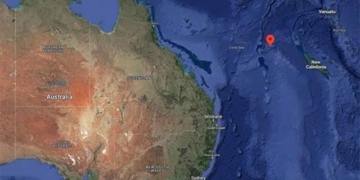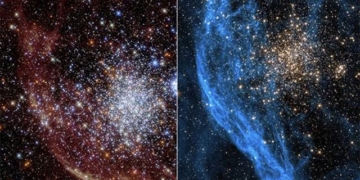Due to different methods of determination, it is impossible for the Lunar New Year to coincide with the Solar New Year.
Every year, around the end of January and the beginning of February, billions of people around the world joyfully celebrate the Lunar New Year (known as Tết Nguyên Đán in Vietnam). Despite having different names and sometimes celebrating the New Year on dates that are one day apart, the New Year festivities in the Asian community always rely on the lunar calendar.
The reason the lunar calendar and the solar calendar cannot coincide is due to their different methods of determining and calculating dates.
1. Different Lengths
Firstly, the lunar calendar is based on the Moon to divide months, with each lunar month corresponding to a lunar cycle, beginning on the day of the “new moon”—the moment when the Moon is positioned directly between the Earth and the Sun. Each lunar cycle lasts approximately 29.53 days, so for ease of calculation, it is conventionally agreed that each lunar month consists of either 29 or 30 days. A month with 30 days is termed a “full month”, while a month with 29 days is referred to as a “short month.”

(Illustrative image: Internet).
But that’s not all. Since the lunar calendar relies solely on lunar cycles, a lunar year with only 12 months would be 354.36 days long, which is about 10 days shorter than the solar year. To prevent these two calendars from drifting too far apart over time, a “leap month” method is used, meaning that every 2 to 3 years, there will be a lunar year with 13 lunar cycles, leading to a leap lunar year lasting 384-385 days.
2. Different Starting Points
This raises another question. If the lunar year and solar year continue to “chase each other,” sometimes having 12 months and other times 13 months, is there any possibility that these two calendars could coincide on the first day of the New Year?
The answer is no, because the starting points of the two calendars cannot align.
The reason is that the solar calendar is designed based entirely on the Earth’s movement around the Sun, which consistently equals 365.25 days each year. Because it relies solely on the Earth’s orbit around the Sun, two significant points on the solar calendar—the Summer Solstice and the Winter Solstice (the two days when the Earth is farthest from the Sun)—are always highly accurate in the solar calendar.
Historically, in the Gregorian calendar, commonly known as the solar calendar, the Winter Solstice occurs on December 21 or 22. Just 9-10 days after the Winter Solstice, the Solar New Year arrives and will always do so.
Returning to the lunar calendar, although it uses the lunar cycles, to align agricultural calculations with the seasons, ancient calendar-makers in the East also factored in the solar cycle to incorporate the concept of “solar terms” based on the Winter Solstice and Summer Solstice. Each year has 24 solar terms, corresponding to typical weather phenomena during that time.
However, the Winter Solstice always falls in the 11th lunar month, meaning there must be an additional new moon or more than one lunar cycle before the Lunar New Year (with the Lunar New Year itself being a new moon). This period is clearly much longer than the 9-10 days of the Solar New Year.
The Lunar New Year does not necessarily coincide with the Beginning of Spring but can sometimes fall during the Great Cold. For example, this year, the Lunar New Year falls exactly on the 22nd day of the 1st lunar month, just 2 days after the start of the Great Cold (on January 20), which is quite early compared to the average.
In general, it is highly unlikely that the Solar New Year and Lunar New Year will coincide, and history has not recorded any such occurrence.


















































